Perspectives on Identity: From Lagos through Accra, to the World and Back
Curatorial Proposal
(Video: "Auto Da Fe" John Akomphrah - Lisson Gallery New York City August 5, 2016)
Our identities consist of the interactions, experiences and perceptions we accumulate throughout our lives. For the African diaspora, discourses of identity rest at the heart of defining words like home, heritage, and nationality. Perspectives on Identity: From Lagos through Accra, to the World and Back is an exhibition that celebrates the new era of defining the African identity outside of Africa. The five artists the make up this exhibition come from Ghana or Nigeria but are currently active worldwide and include John Akomfrah (CBE) and Yinka Shonibare (CBE) who have received an Order of the British Empire for their prolific oeuvres. The common themes throughout the artists’ works reveal a commonality in expressing an organic connection with Ghana and Nigeria through the powerful explorations of the displaced identity.
Ghana and Nigeria recently underwent similar socio-economic development. Its major cities in particular have become hotspots for tourism due to their openness in sharing and expressing African cultures to homecoming diaspora and curious foreigners. The two countries have also embraced contemporary Western culture, allowing for a general nurturing of international connections. Ghana’s ‘Year of the Return’ in 2019 is an example of this reconnection with new generations of the diaspora. People of African heritage were encouraged to ‘return to Africa’ and visit their country of origin in order to reconnect with their roots and redefine their identity. Ghana’s initiative signified a pivotal turn in the global appreciation for African culture. However, Western pop-culture had already begun to embrace the arts and culture of Sub-Saharan Africa years before, so has now further developed stronger connections between Africa and communities all over the world.
It is therefore no secret that the vibrancy of Sub-Saharan Africa, and in this case specifically that of Ghana and Nigeria, remains uncontainable to its coast. The artists capture reflections of movement as well as a desire to carve a new shape for their current identities. Therefore the artist as ethnographer is explored here through their approaches to ‘home’ as both an objective concept of space and subjective concept of place.
This exhibition’s proposed location is the South London Gallery in Camberwell, London. It resides near the up-and-coming district of Peckham and is located near the Camberwell College of Arts. This gallery thus thrives within ongoing cultural and artistic conversations and will therefore attract a curious young audience. The large Diaspora community that resides in the area and the area’s cultural diversity would hopefully react enthusiastically to this exhibition. Additionally, the exhibition would further benefit from a panel to discuss the creative voices deriving from the African diaspora. Ideally, the panel will consist of at least one young British activist and two artists from the exhibition to discuss their works.
The charting of history and movement reveals the complexity of our multiculturalist existence. We exist within a network of similar yet diverse entities shaped by the people we interact with as well as our encounters with various places and situations. The artists of this exhibition explore the dynamism of diversity and display visually stimulating reactions to the journey of defining a whole and encompassing identity.
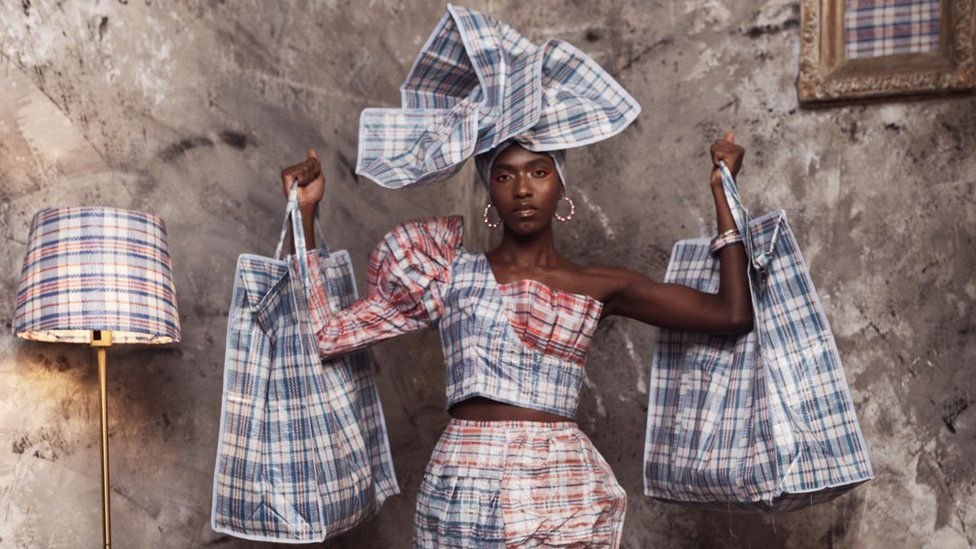
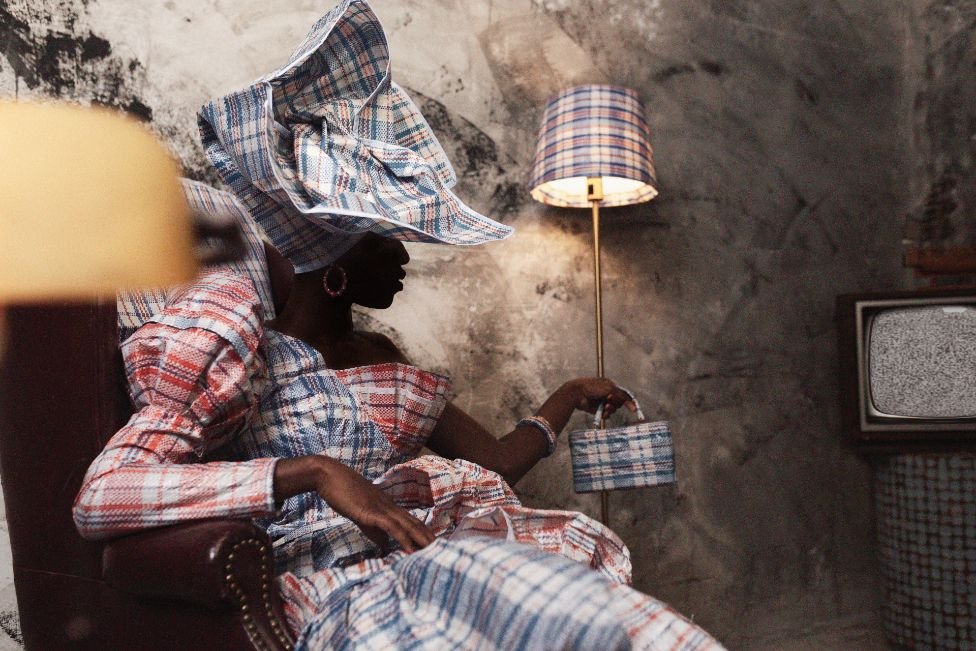


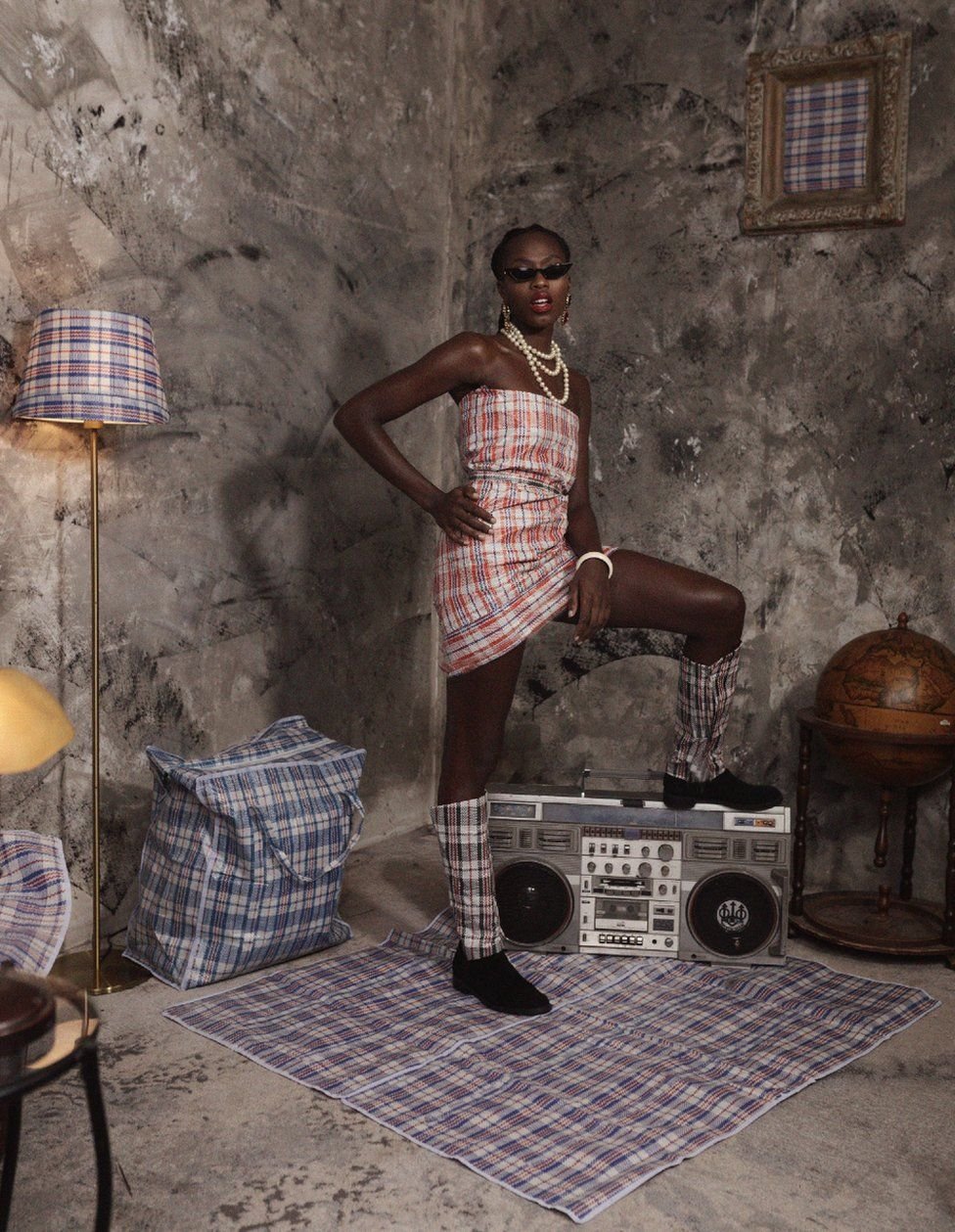

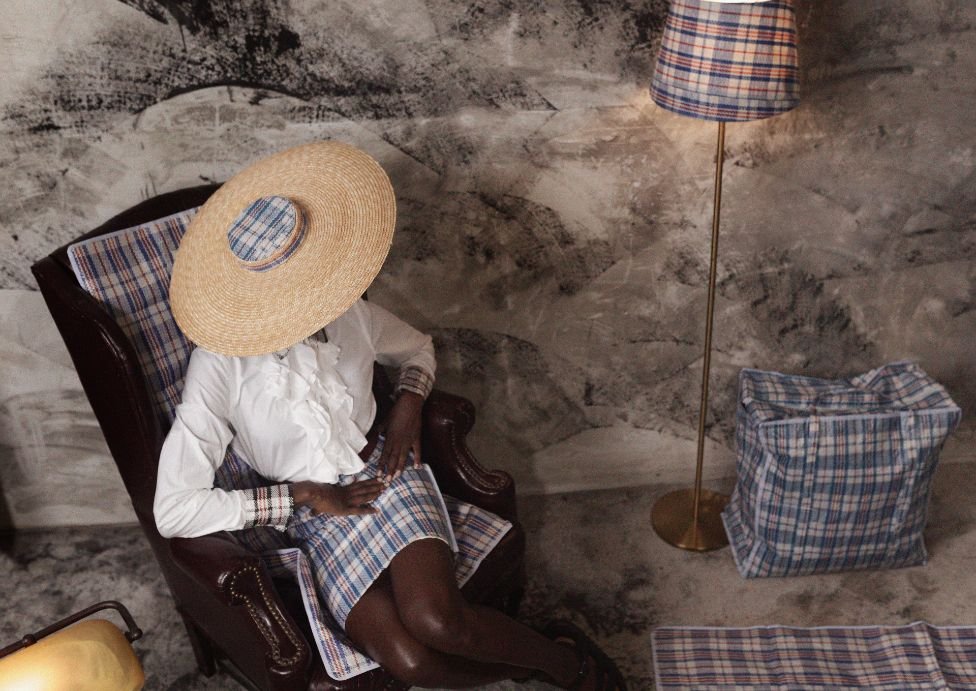
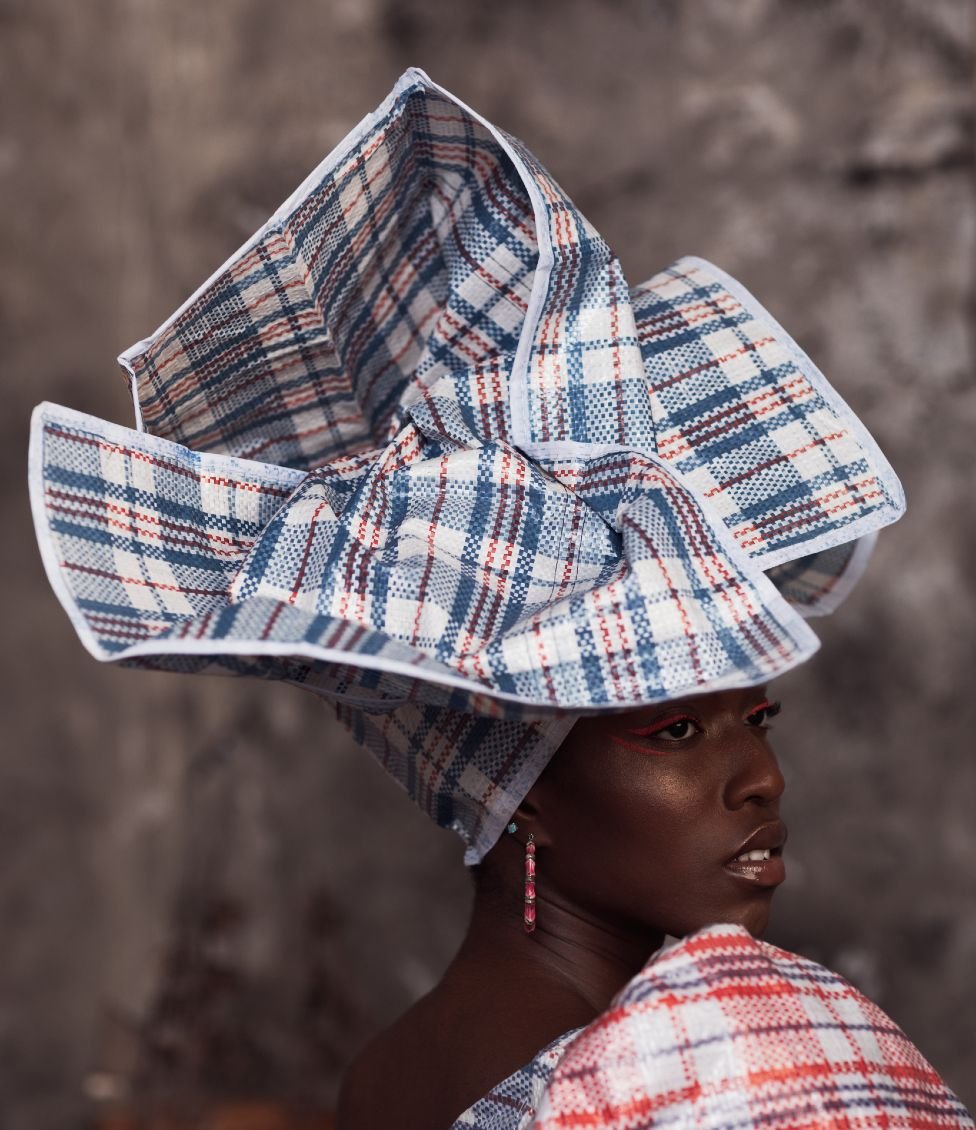

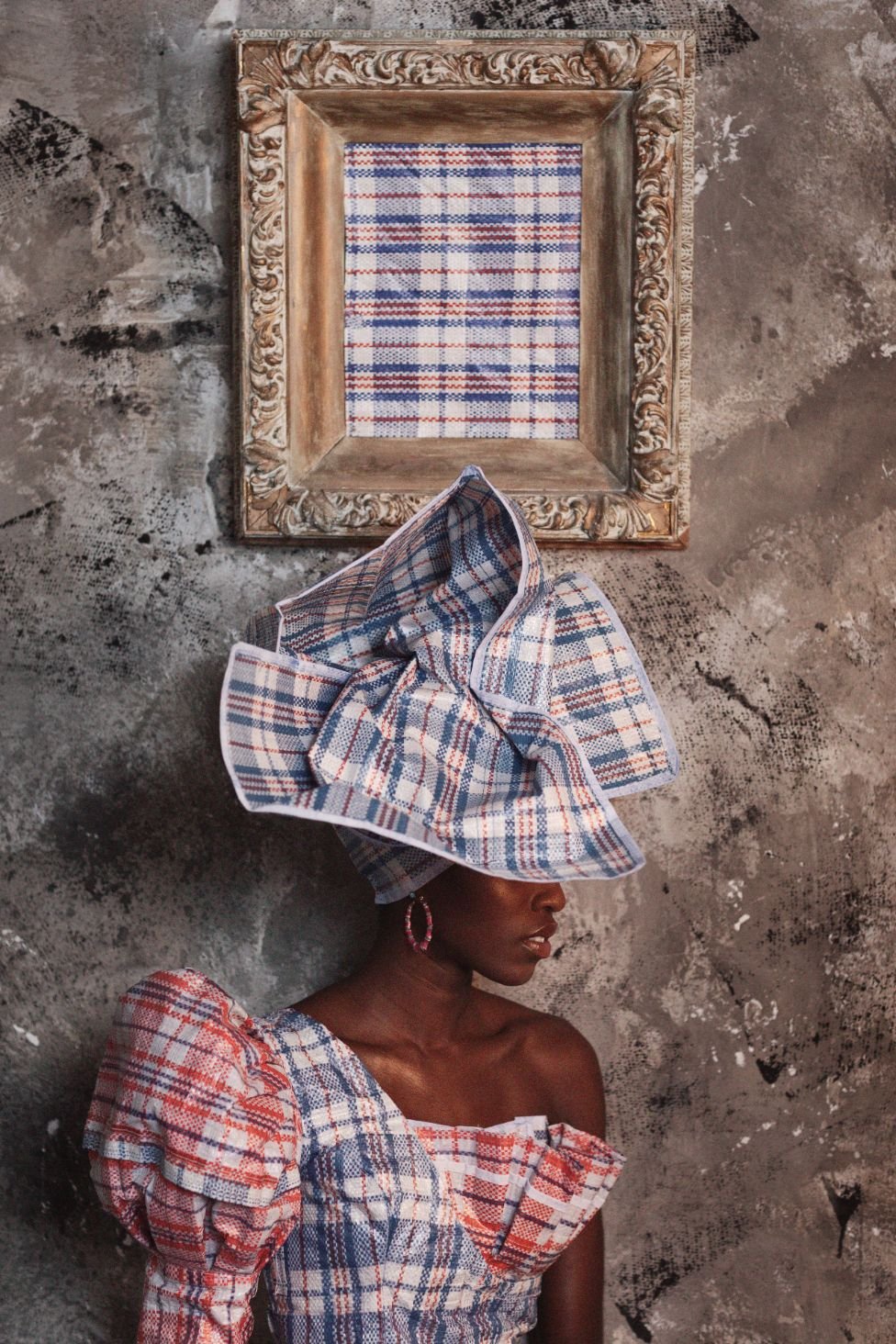
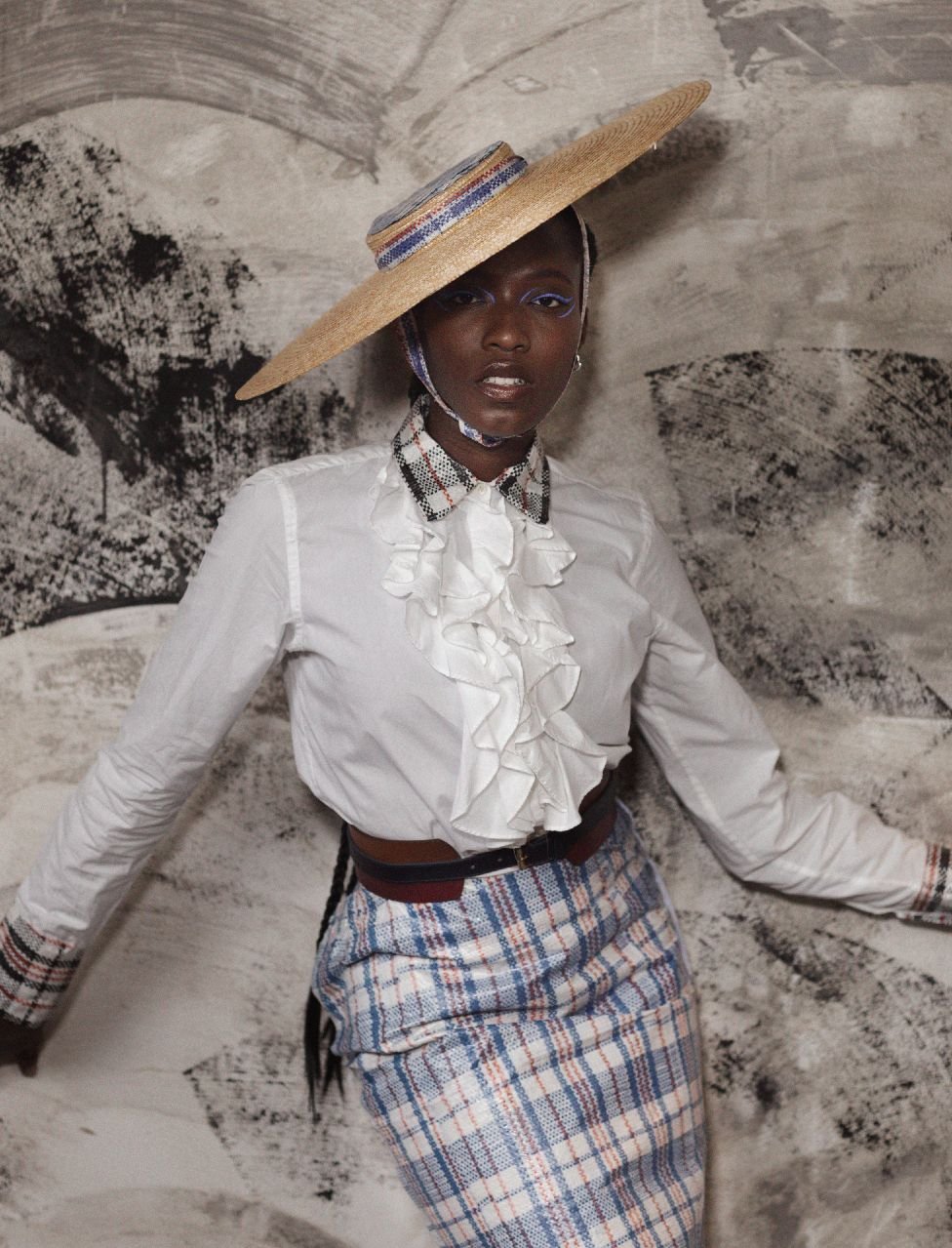
Anyi N’Aga
Obinna Obioma, Nigerian, b. 1991, 11 Digital inkjet prints, 2020
Anyi N’Aga translates to ‘We Are Going’ from the Nigerian language of Igbo. Nigerian born, UK educated and now US based, Obioma reflects on the multicultural nature of our identities through the reinterpretation of the famous — or perhaps now infamous — ‘Ghana Must Go’ bag.
This seemingly ordinary bag garnered its name from its popular use in the 1980s when millions of illegal migrants, half of which were Ghanaian, were suddenly forced to leave Nigeria. It was the ideal travel bag because they were cheap yet durable and came in generous sizes allowing the Ghanaian’s to pack up most of their belongings in haste.
The outfits, created by Nigerian designer Cioma Obiegbu and styled by Wuraola Oladapo, integrate both Western and African styles. The homage to African culture is evident in the elaborate headdresses, while some of the other clothing pieces such as the tight pencil skirt mimic classical Western trends. To many, this pattern is a recognisable one because they are still widely used around the world. Obioma’s use of the bag thus encourages a discussion of its controversial nickname by providing a space in which its historic and contemporary symbolism can converse.
Auto Da Fé
John Akomfrah CBE, Ghanaian, b. 1957, Two channel HD colour video installation, duration 40 minutes 30 seconds, 2016
The title of Akomfrah’s video installation translates from Portuguese to ‘Acts of Faith’. This cinematic homage to refugees fleeing religious prosecution spans across four centuries of forced migration. These stories are anchored in a historical reality of the dangers migrants face in their escape from harm. The unnatural forces that caused their departure are absent from the video, allowing Akomfrah to fully turn his attention towards embodying the challenges migrants faced before them.
The risks that the migrants face, including the possibility of death, is highlighted Akomfrah’s exploration of the sea as a channel for escape. These visually detailed stories share the common theme of hope as lost luggage and dampened photographs lie abandoned along the shore. To these individuals, the only way was forward and the unnamed locations not only add an anonymity to the places and the people of these stories, but adds to the universality of his depictions of displacement and desire for belonging.
Lagos to Accra
Mr. Eazi, Nigerian, b. 1991, Audio, duration 2 minutes and 55 seconds, 2017
Music arguably travels faster than any other creative medium and Afrobeats is the latest cultural phenomenon to sweep across the world. While its roots are established in West Africa, its style has been celebrated in Europe and the US thanks to artists such as Oluwatosin Oluwole Ajibade, or better known as Mr Eazi. Mr Eazi is currently one of the most famous artists to come from the Afrobeats genre. His incorporation of West African rhythms with a dancehall execution has carried him to international fame, which continues to expand.
Born in Nigeria but spending several years in Accra where he studied Mechanical Engineering, Mr. Eazi brings his connections to Nigeria and Ghana into his music as he travels between London and West Africa. So far his two albums, Lagos to Accra and Lagos to London explore themes of travelling from the get-go. His song “Lagos to Accra” celebrates his nomadic lifestyle through incorporating Nigerian jargon as well as Ghanaian words from the ‘Twi’ language. From jetting to London for festivals to visiting Accra and reuniting with his family and friends, through his lyrics and his music in general Mr. Eazi is on a journey to find out what home means to him.
The British Library
Yinka Shonibare, MBE, British-Nigerian, b. 1962, Multimedia installation, 2014
‘The British Library’ defines Shonibare’s installation quite literally. Over 6000 books line the shelves and are covered in Dutch wax prints. 2700 of those books bare a name of an immigrant to the UK along its spine in bold gold font. This installation emphases the multi-cultural diversity of Britain. The names printed on some of the books are immigrants who have contributed to the arts and culture of the UK, but which also includes names of public figures who oppose immigration. These names are not just those from non-Western countries, but from every continent and therefore recognising the diversity of the UK.
The use the colourful wax print not only shows a beauty in through unique patterns but also raises interesting questions regarding its use as a commodity in colonial Africa. The fabric is a direct result of colonialism but has come to represent the riches that are cultivated in West Africa, and then brough to the UK.
Part of the installation includes a website with information and stories of the people who are labelled on the books. Visitors are invited to explore the various lives of these individuals and also submit their own stories, adding them to the impressive constellation of voices who are proud to call the UK their home.
Many Came Back
El Anatsui, Ghanaian, b. 1944, Aluminium and copper wire, 2005
El Anatsui’s bottle-cap installations have garnered international attention not simply because of their incredible size, but more importantly the stories that they tell and the histories they represent. The size of this installation comments on the economic commodity of liquor bottles in Nigeria by foreign investment markets. Historically, slaves were handled in a similar way, where they were taken from Africa and shipped to Europe or the US and then generations later, their kinfolk can revive their connection to Africa. Anatsui honours this history by weaving symbols such as the traditional kente cloth into his metallic tapestries.
The bottle-caps are collected in his home country of Nigeria, and are pressed, cut and folded into shapes that are then stitched to one another using copper wire. ‘Many Came Back’ is a direct response to Anatsui’s Nigerian and Ghanaian heritage and reflects a direct relationship between an artist and their local surroundings. Through this installation, Anatsui urges us to remember while we may live as separate entities, like these bottle caps, we exist within an interconnected web of interactions.



